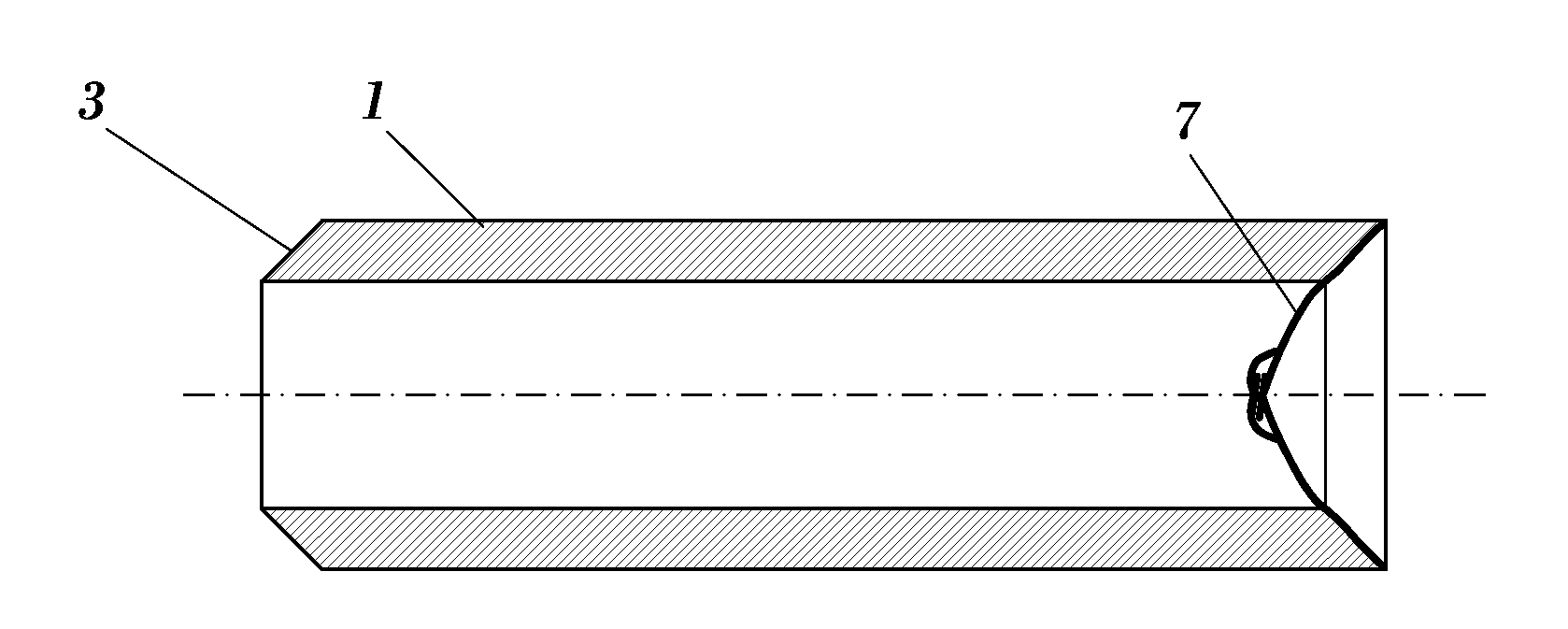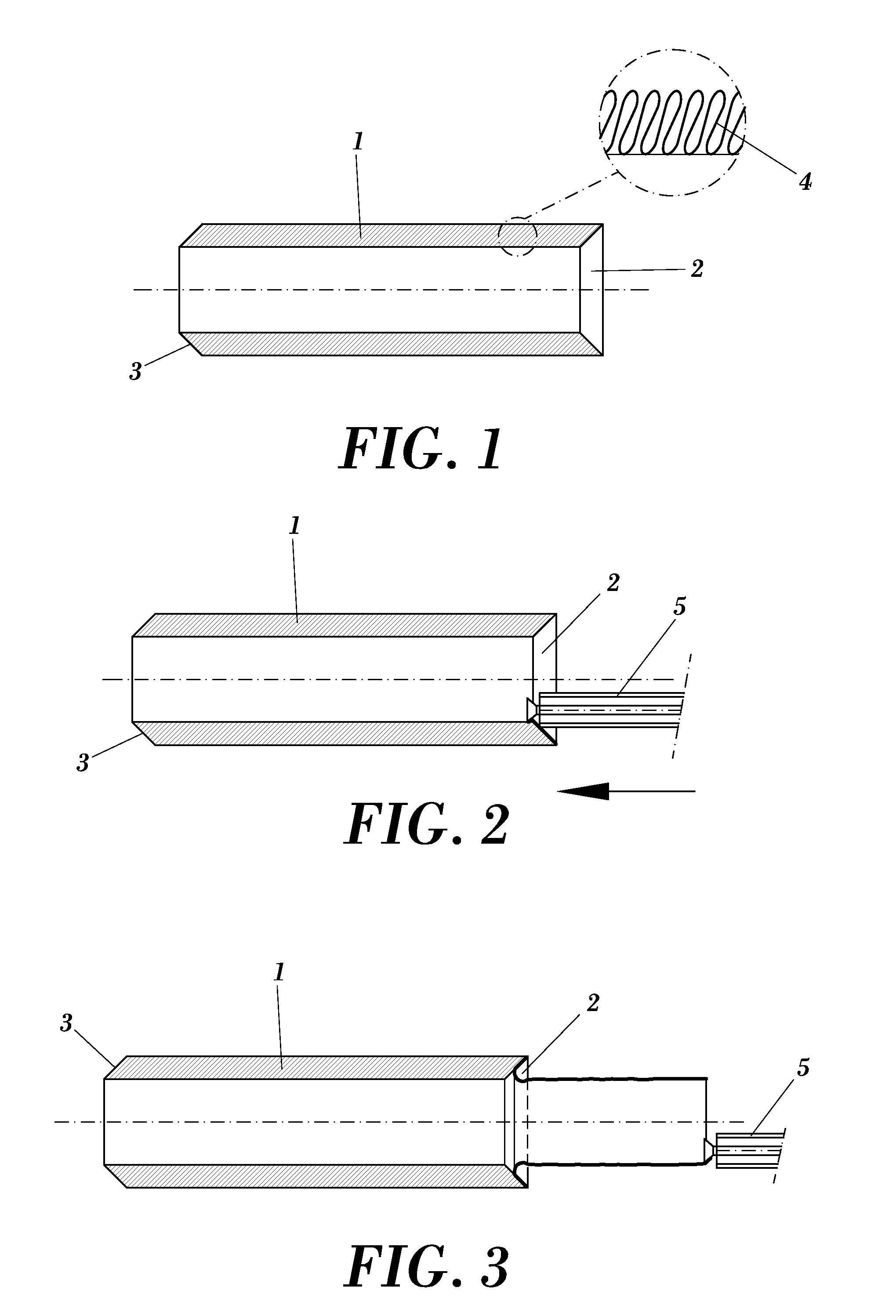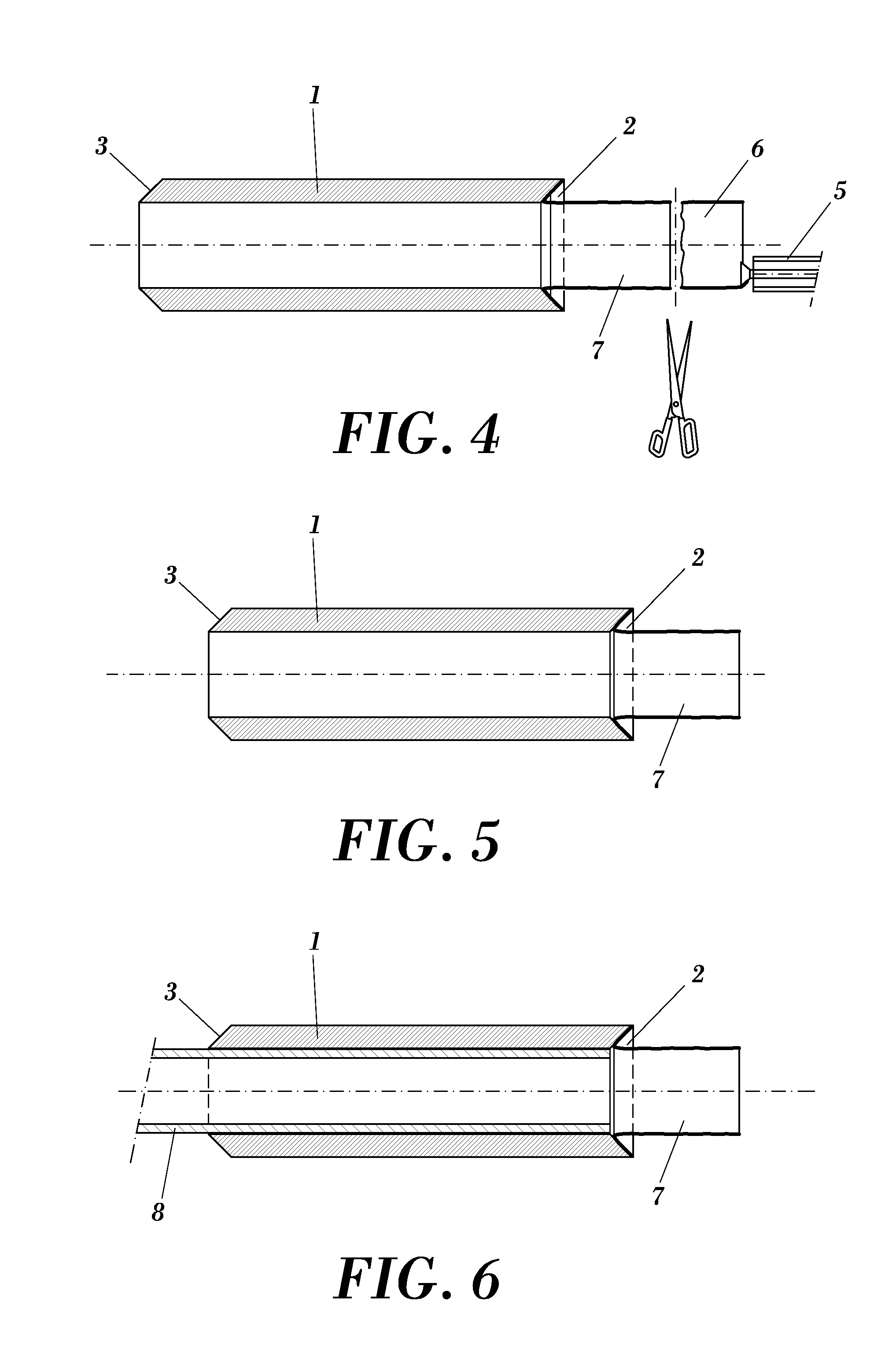Method for closing the end of folded tubular casings
a tubular casing and end closure technology, applied in the field of tubular casings, can solve the problems of deshirring of the tubular casing, affecting the production of fillable products, and the inability to use an extremely complex machine as an additional, so as to facilitate joint rotation and prevent the deshirring of a larger portion. , the effect of high filling pressur
- Summary
- Abstract
- Description
- Claims
- Application Information
AI Technical Summary
Benefits of technology
Problems solved by technology
Method used
Image
Examples
Embodiment Construction
An object of the invention is to make an end closure of shirred tubular casings which prevents heating and melting the material of the tubular casings and therefore their crystallization, preventing areas of extreme hardness at the terminal end of the tubular casings.
Another object of the invention is to obtain a terminal end without a considerable waste of material that is highly resistant for the automatic filling process and the outer appearance of which is as visually pleasing as possible.
This invention can work ON-OFF line in the shirring machine, i.e. forming part of the shirring line or as an operation independent from the shirring.
The invention proposes a method for closing the end of shirred tubular casings, whether they are made of collagen, cellulose, plastic, etc., which comprises:deshirring a terminal portion of the tubular casing in the direction of the axis of the stickturning over the deshirred terminal portion in order to insert same inside the casingsecuring the de...
PUM
 Login to View More
Login to View More Abstract
Description
Claims
Application Information
 Login to View More
Login to View More - R&D
- Intellectual Property
- Life Sciences
- Materials
- Tech Scout
- Unparalleled Data Quality
- Higher Quality Content
- 60% Fewer Hallucinations
Browse by: Latest US Patents, China's latest patents, Technical Efficacy Thesaurus, Application Domain, Technology Topic, Popular Technical Reports.
© 2025 PatSnap. All rights reserved.Legal|Privacy policy|Modern Slavery Act Transparency Statement|Sitemap|About US| Contact US: help@patsnap.com



